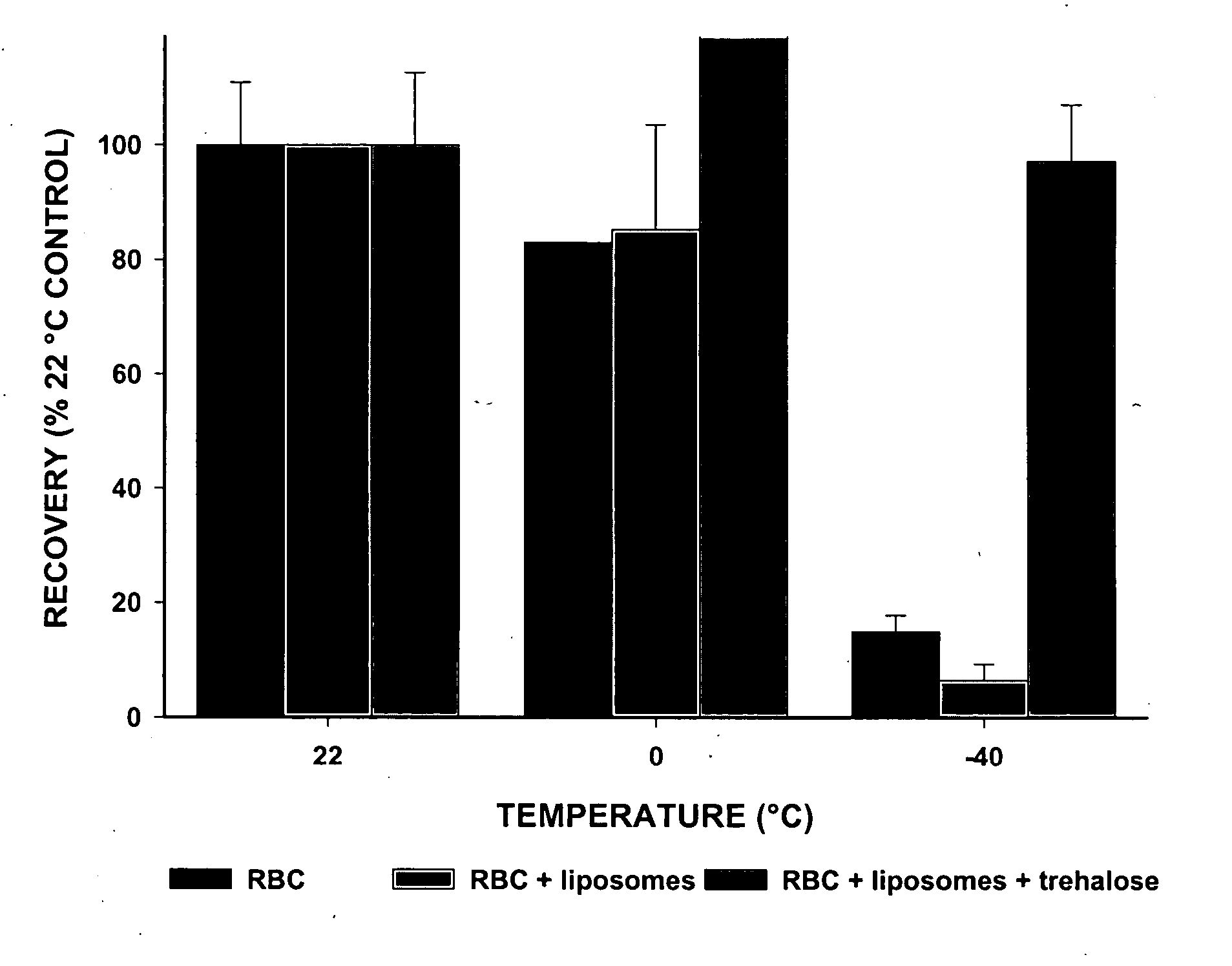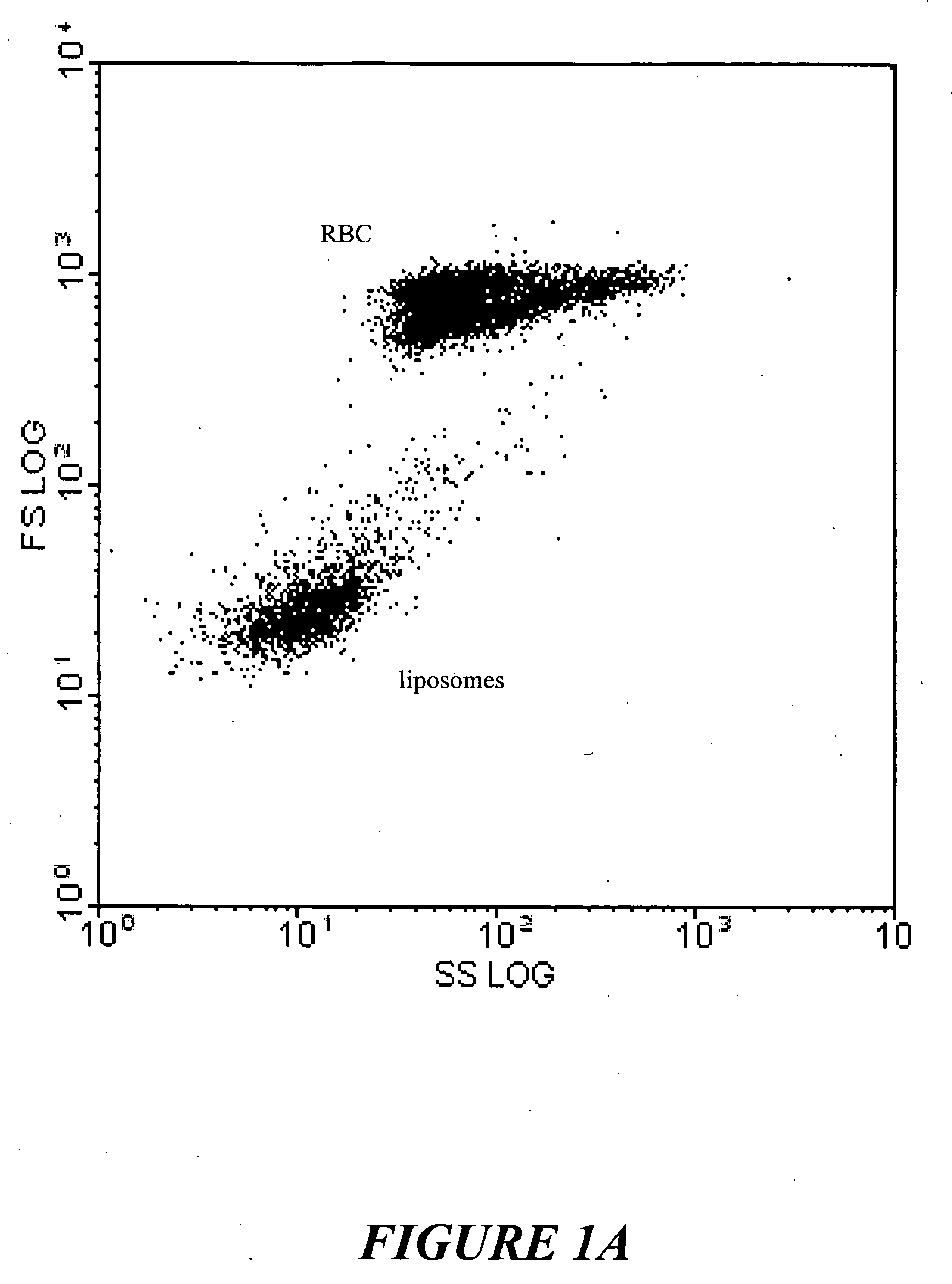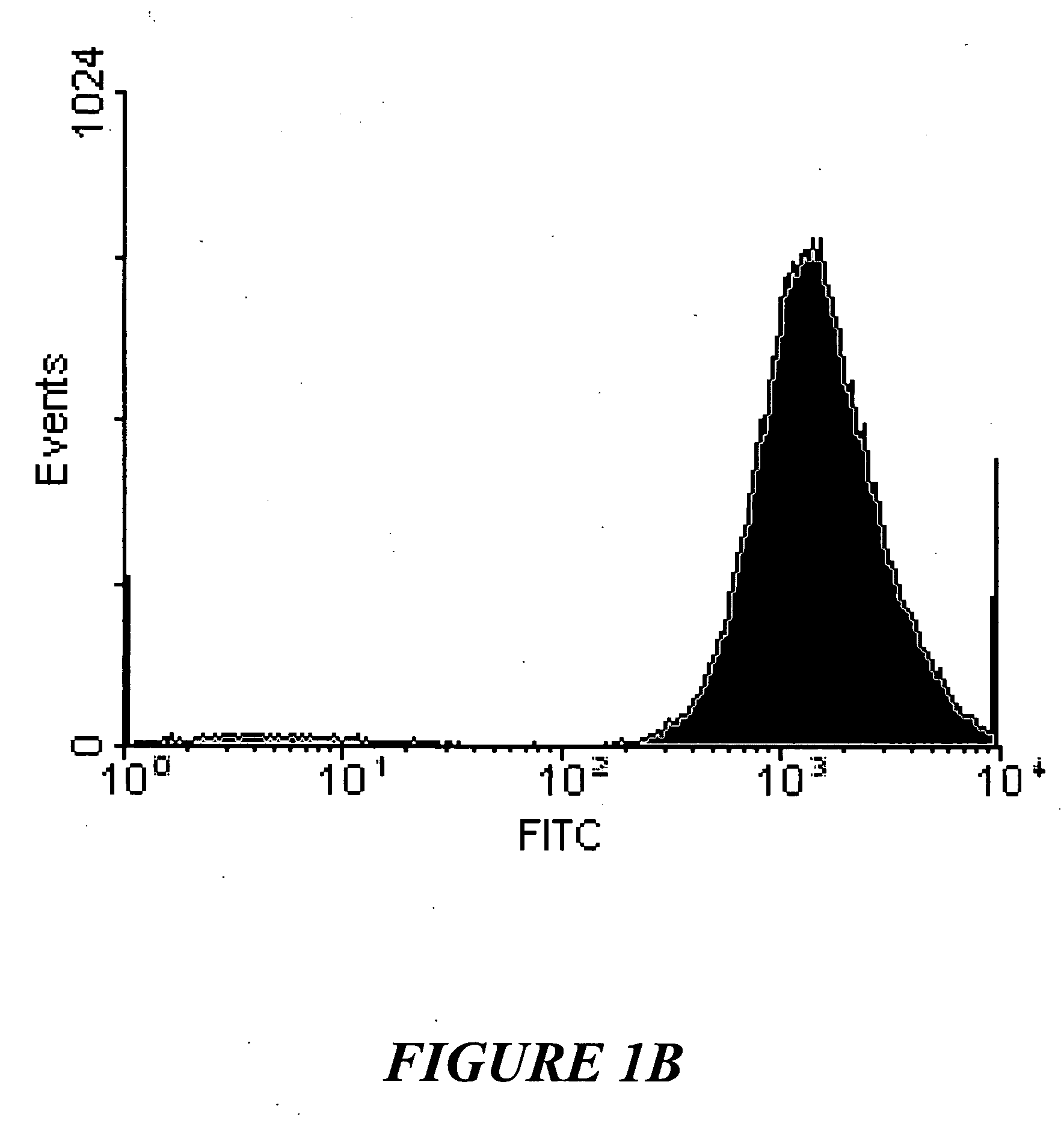Method of cryopreserving cells and tissues by liposomal delivery of sugars to enhance post-thaw viability
a cryopreservation and intracellular sugar technology, applied in the field of cryopreservation of cells and tissues, can solve the problems of reduced toxicity of sugars, dedicated instruments and precise control of physical parameters, and reduced overall processing time, so as to enhance the effect of liposomal-delivered intracellular sugars, maintain cell viability, and process rapid, easy and simple
- Summary
- Abstract
- Description
- Claims
- Application Information
AI Technical Summary
Benefits of technology
Problems solved by technology
Method used
Image
Examples
Embodiment Construction
[0065] In accordance with a preferred embodiment of the present invention, a method for enhancing post-thaw viability of cryopreserved cells and tissues includes the step of loading sugar into liposomes (or “liposomal vesicles”). The sugar-containing liposomes serve as delivery vehicles for delivering cryoprotectant sugar(s) into cells that are to be cryopreserved. This method of cryopreserving cells enhances post-thaw cell viability.
[0066] In accordance with a preferred embodiment, the method includes the steps of (i) loading sugar into liposomes; (ii) fusing the liposomes to cell membranes of cells that are to be cryopreserved, thereby delivering the sugar into the cells as a cryoprotectant; (iii) cooling the cells to a predetermined nucleation temperature; (iv) nucleating extracellular ice; and (v) cooling the cells to a temperature lower than the predetermined nucleation temperature.
[0067] This method can be utilized to cryopreserve cells, tissues or other biological materials...
PUM
| Property | Measurement | Unit |
|---|---|---|
| outer diameter | aaaaa | aaaaa |
| outer diameter | aaaaa | aaaaa |
| diameters | aaaaa | aaaaa |
Abstract
Description
Claims
Application Information
 Login to View More
Login to View More - R&D
- Intellectual Property
- Life Sciences
- Materials
- Tech Scout
- Unparalleled Data Quality
- Higher Quality Content
- 60% Fewer Hallucinations
Browse by: Latest US Patents, China's latest patents, Technical Efficacy Thesaurus, Application Domain, Technology Topic, Popular Technical Reports.
© 2025 PatSnap. All rights reserved.Legal|Privacy policy|Modern Slavery Act Transparency Statement|Sitemap|About US| Contact US: help@patsnap.com



